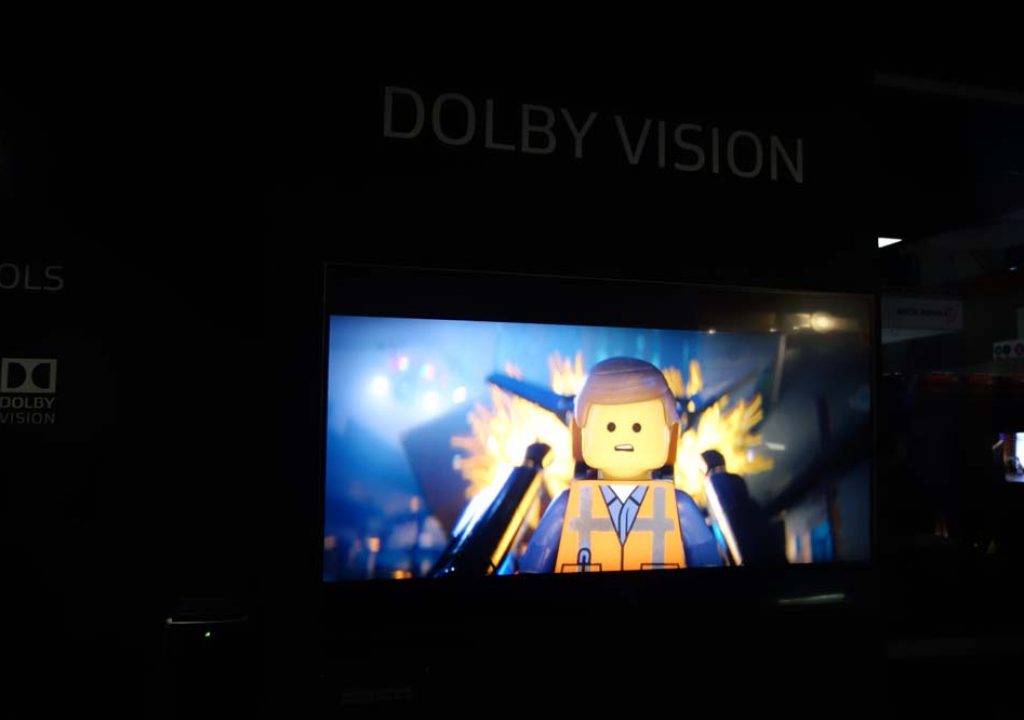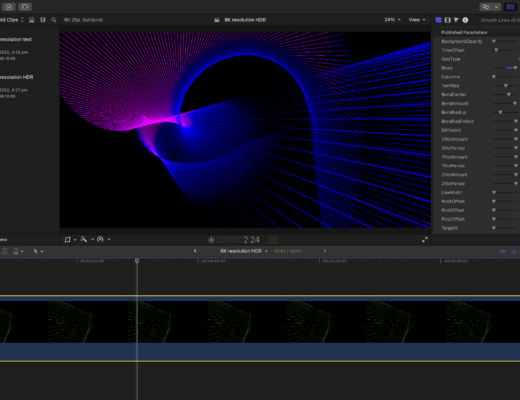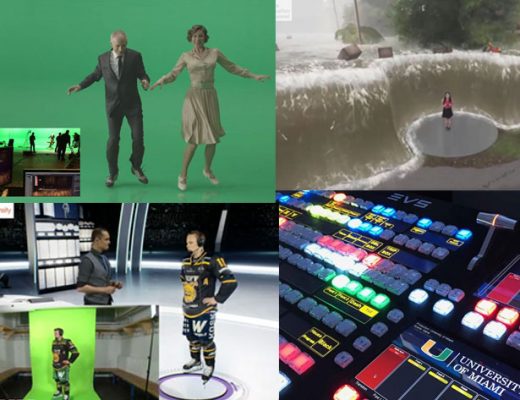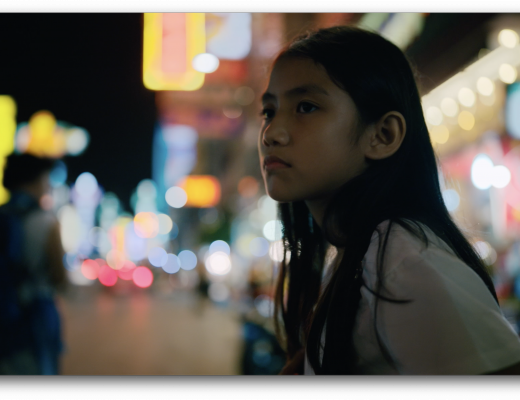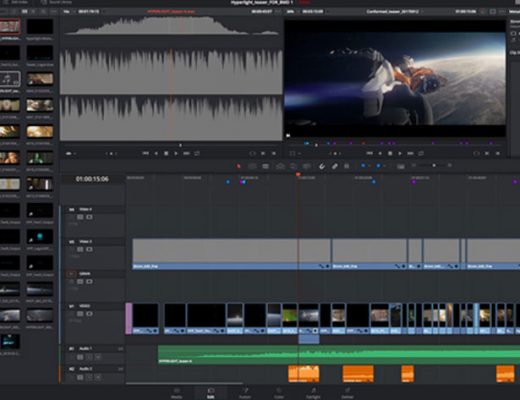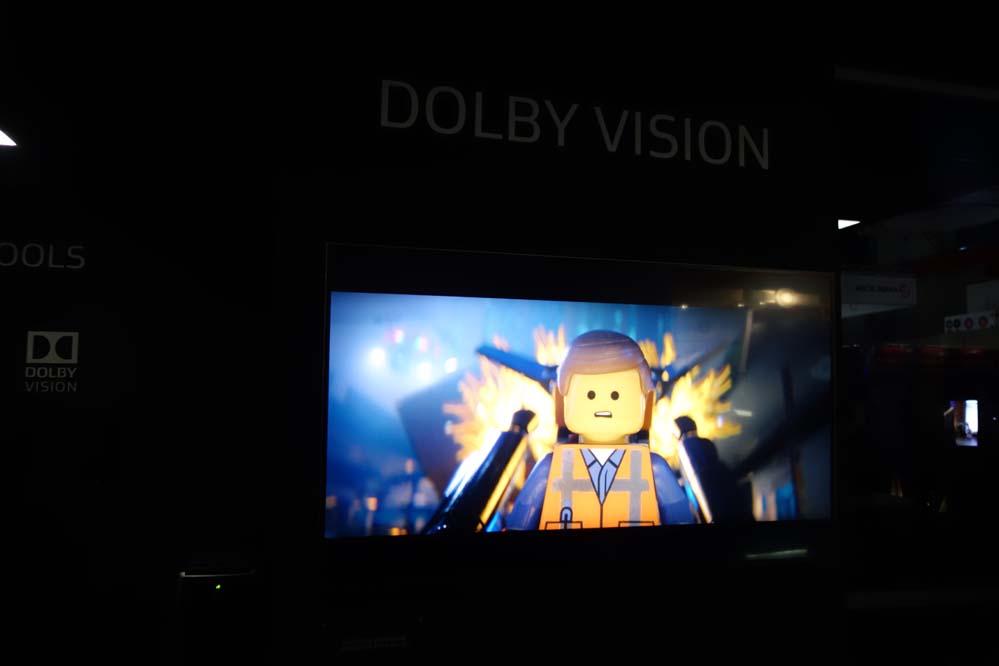
Dolby Vision has had a presence at industry events for many years now, but high-dynamic range (HDR) technology is finally coming to forefront at these events and throughout the market. There are various articles that explain how and why the technology is so revolutionary, but it really comes down to the simple concept of improving the quality of a pixel rather than simply adding more of them.
I wanted to see what this meant for the people making content today so I talked with Roland Vlaicu from Dolby to ask him how professionals can and are being impacted by HDR. We talked about the prominent place that HDR has in the Dolby Vision digital ecosystem, how HDR and 4K do or don’t co-exist, what consumers think of HDR and plenty more.
HDR has been showcased in the Dolby booth via Dolby Vision at events like IBC and NAB for years now, but this past IBC was the first time I’ve seen it all over the place, and it seemed to be a topic that a lot of people really wanted to talk about. Did you have that sense as well?
Roland Vlaicu: Yes, absolutely. People came to the booth expecting and wanting to talk about HDR, and that’s a significant development.
We’ve been researching the topic of HDR for 7 or 8 years now, and we’ve been strong believers in it from the get-go, so we’re very happy to see that it’s ready for prime time. Three years ago we started to socialize the topic in very subtle ways with key creatives in Hollywood to get them to understand the value of high dynamic range and wide color as a significant advancement to the fidelity of the video signal. That’s in addition to and compatible with other enhancements such as higher spatial resolution and high temporal resolution, such as higher frame rates. We didn’t ever want to position it as a substitute for any of those advancements, but to instead convey that it goes hand-in-hand with them.
What’s really exciting is we’re seeing that it’s really ready for prime-time in the consumer space. It’s being recognized as a strong contributor to enhanced visual fidelity that drives a better consumer experience. With Dolby Vision, we think we have a strong answer to the question of how we can get this into the real world and into consumer’s hands.
Just last week in New York we showed the first television with Dolby Vision, the Reference Series from Vizio, and it debuted to a very positive response. We’re also lining up the content that goes with it so that it’s a complete experience and not just a piece that people don’t know what to do with. From our perspective, it’s all about the Dolby Vision experience in the home and on the big screen, and it’s something we’re hoping professionals and consumers continue to seek out.
What is it about HDR that has people so excited?
Whether you’re looking at a side-by-side comparison or not, you can really see the difference in an HDR display. That difference is something viewers can appreciate in more ways than one, and it really stays with people.
In the beginning we did a lot of private demos where we’d invite select audiences that we thought would be the right audience for this. We’d walk through the concept and show them a comparison, and it was really eye-opening for them. When you can see the difference HDR represents, people have said it’s not just evolutionary, but revolutionary. Others have compared it to the switch from black and white to color. It’s not just about a display but an entire experience, because that experience is what really gets people excited and shows them what is possible.
I saw gear in the Canon and Sony booths IBC which showcased HDR display technology, so can you explain how Dolby Vision fits or works with other HDR products?
Dolby Vision is collection of technology pieces that ultimately cover the entire ecosystem. Essentially, we consider Dolby Vision to be the combination of HDR and wide color, because we think both of those are equally important for the viewing experience. When we’re talking about that production ecosystem, it goes from capture to encoding to grading to delivery. All of those aspects of the workflow and ecosystem require changes and enhancements which are going to deviate from the way in which those things are handled today.
You mentioned the HDR monitors you saw at the Canon booth. That’s just one tool that will be needed in a collection of many tools for people to create and deliver HDR and wide color for an audience.
With Dolby Vision, we’ve defined a couple of those aspects pretty clearly to allow the industry to adopt this workflow in an efficient way. We figured out how to put this much higher dynamic range and wider color signal into a container that is very workable. For example, Dolby Vision fits into 12-bits. Getting Dolby Vision or HDR to fit into 12-bits was a challenge in and of itself, because it means we’re trying to represent this higher quality signal without using more bits per pixel, because we didn’t want to deviate from what people are currently used to. We’re in the process of standardizing the way in which we’ve put together these bits and pieces.
What was initially perceived as a fully proprietary Dolby Vision system is evolving into delivering the components so the whole industry can embrace them. That’s where those monitors and displays come into play. We’ve been building our own reference displays for Dolby Vision color grading, simply because there weren’t any that existed which could visualize this fidelity of content. Now we’re seeing manufactures adopt and embrace this, which is great, because it means that many more people are going to be able to use this technology.
It’s all part of a much bigger revolution in terms of image fidelity, and we know we can’t do this all ourselves. We know we need to work with partners and come up with standards that make sense. Not only that, but we want people to know that if they master their content in this new format they won’t be relying on a single company to ensure that content stays viable. That content’s fate shouldn’t be dependent on one company. We want people to know when they archive their content there will be a standardized way to retrieve it.
The line with HDR is that it’s about making a better pixel, as opposed to adding more of them. When it comes to 4K and HDR, is it a case of either/or? Or do these technologies complement each other?
They complement each other very well. HDR and wide color gamut are a big topic now, but 4K and UHD content products have been talked about for awhile, and that’s fine. All of the televisions that are coming out with Dolby Vision will also be UHD televisions, at least initially. All of the content that’s being mastered in Hollywood right now in Dolby Vision will be UHD as well.
4K and HDR are certainly compatible and complement one another, and just by the definition of the market dynamics they’re coming to market together. That said, it’s not a requirement. In the future there could be HD devices with Dolby Vision or HD content that is mastered in Dolby Vision.
When we’re talking about making a “better” pixel, that essentially comes down to improvements in brightness, contrast and color. Are those improvements around the properties of the pixel itself, or how they’re able to be displayed and perceived?
It’s really both.
One question is around how you can master content so that your final deliverable actually represents the content at the highest fidelity so you’re using more bits per pixel to represent the characteristics of high quality representation in the signal. That’s something Dolby Vision enables, and it effectively gives you a much higher fidelity in the signal itself. Then, the next question is how you display it. You need to figure out how to leverage the display technology of today and the future to really exercise the capability and show off what’s contained in the signal.
One example is that we’re mastering content with a professional display of 4,000 nits brightness and a P3 color gamut. The televisions that are coming out might be able to cover that gamut, but they won’t have the dynamic range of the professional displays. They won’t be able to go to 4,000 nits and have the same local contrast. That’s something that will evolve in the future.
In the future, LCD televisions with local dimming LED capability will create a great HDR Dolby Vision experience. OLEDs might be a display technology that’s leveraged in a different way as well. It might have a lower brightness capability but will have an even better local contrast performance so you get a different but also very impressive HDR experience.
All of that is serviced by the same piece of content that has been created at this super high level of fidelity that displays in the future will be able to take advantage of in terms of the ability to actually show that improvement in the signal.
Content that’s mastered today won’t be outdated next year when a new or better TV shows up. The content we’re mastering today will last into the future in terms of its’ fidelity. We believe it will be able to compete for many years with the content that will be coming out because it’s already at such a high standard.
Picking up off of a comment from an article on Gizmodo, do you think we’ll ever be able to match the capabilities of the human eye?
The human visual system is extremely powerful and it comes with this feature called adaptation. Depending on your viewing environment, it allows you to adapt the range, but still get enough granularity and resolution into the dynamic range that you can resolve it. So if you’re adapted to a dark room, you can resolve an enormous amount of black detail. If you’re out in the sunlight you can look at the sun very briefly without your visual system being destroyed.
Being able to replicate experiences like this is definitely part of our goal, but to actually get the full range of what human vision is capable of and maximize it is probably not possible. That said, I think we can get very close to it and let viewers have an experience from an entertainment perspective that really resonates.
Where do you think the hesitancy of the industry as a whole to embrace this technology stems from? Is it from the standards that have been in place for so many years? Or assumptions about the costs that would be incurred? Or people simply not wanting to change the way they’re doing things?
A huge part of it is definitely in terms of people being too comfortable with the existing way of doing things. The other thing we noticed early on were questions that came from the device industry. They were asking whether or not they could build a display that is much brighter than today’s within a cost that is compatible with what people are used to paying. People just hadn’t looked at that, because over the past fifteen years no one had the idea to build brighter displays or better contrast ratio because the content was always the same, so there was no need to.
Once we gave professionals the ability to make higher quality content, the initial reaction was to try and figure out how that was actually going to work, and whether their supply chain and vendors would actually give them options to develop something like that. There was hesitation because people were surprised in a positive way, but also overwhelmed. They had questions about what that was going to mean for their business.
One part of the industry where we never had any hesitation was from the creatives. So many of them feel that everything they do is a compromise because they can’t fully execute on their artistic vision because of technical limitations. At least on the dynamic range and wide color aspect, we’ve taken away a lot of those technical limitations. They were incredibly excited to see that was possible, but also to see how that could influence the visual experience for their audience. They could see it would allow them to create something that was much more in line with their original vision. It’s definitely something they got more excited about than higher resolution or high frame rates. Those things are nice, but if you ask any creative who understands these issues what they would go with if they had to choose, most of them would pick dynamic range and wide color over any other enhancement.
The rest of the supply chain was asking the right questions though, in terms of whether or not this was viable, whether it was something they could implement in a way that was available to a mass market, and the answers are, “yes.”
When we were showing off the Vizio Reference Series we were streaming UHD with Dolby Vision from Vudu all day long without any problems into the venue. It’s definitely something that’s going to be an instant experience. As people start using these new displays they’re going to find Dolby Vision content is available via online streaming right away, and there’s going to be a lot to choose from. It’s going to be a real use case that’s applicable to mass markets.
You mentioned the supply chain, so what kind of an impact will this technology have on post? To implement HDR properly, are we talking about an entirely new post-production infrastructure in terms of monitors, displays, etc.?
We thought this through in great detail, and one of the key requirements for us was to not ask people to change everything they’re doing or replace all of the equipment they have. We wanted this to be a practical approach. We didn’t want this to be something that you saw at a tradeshow where you could say how it was a nice demo but it would never work in the real world because of so many prohibitive items.
I think we managed to execute that very well. For example, in a color-grading suite where content is being created right now for mass consumption, the only thing that needs to be replaced is the display, and then you download a plug-in to the color grading solution of your choice and you’ll be able to create this content in that new format without any problems.
What are the next steps you’re taking to see HDR more fully realized and embraced throughout the industry?
We’ve shown some products that are positioned at the high end, and that’s where these kinds of features always originate, but we need to see this technology trickle down to the mid-end. It needs to happen in a way that doesn’t destroy the experience though. Of course, you could put a technology like Dolby Vision into any display device, such as a cell phone, but where is the cutoff point when it doesn’t make sense to install that technology because it doesn’t change the experience due to the limitations of that specific device? Figuring that out is a high priority.
We’ve been working closely with TV manufacturers to identify how Dolby Vision can help increase the performance or experience of hardware that’s not at the high end of the scale. So we’re doing a lot of work to see how certain displays can benefit from Dolby Vision signals and how you can drive those TVs that increase the performance based on the data that is contained in the Dolby Vision signal. And we’ve seen a lot of great results there.
We’ve also started to venture into areas other than feature films. Netflix has announced support for Dolby Vision and the first show that’s going to be released in Dolby Vision is Marco Polo. As we showed at IBC, we’re also looking to apply Dolby Vision to live sports. We’re trying to create a better-looking experience for content that isn’t going to get color graded in an offline process, but goes on-air live. So we’ve been working with companies like Grass Valley to create a workflow proof of concept that enables a Dolby Vision experience for that type of content.
Are consumers ready for HDR?
They’re already embracing it, and I think a lot of that is because it doesn’t take a lot of technical explanation to get the consumer excited about HDR and Dolby Vision. You can just show it to them and it’s something they immediately want to have. We are seeing a lot of demand and appreciation for this technology on the consumer end.
It’s also a big topic of conversation among the TV manufacturers, and of course among the people creating the content for those devices. Consumers are reacting to and asking for this technology, and that awareness and desire is only going to increase.

Filmtools
Filmmakers go-to destination for pre-production, production & post production equipment!
Shop Now